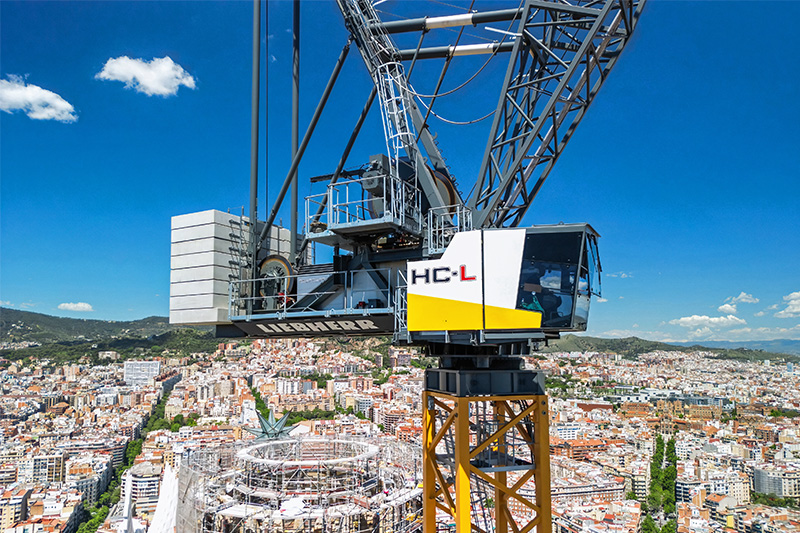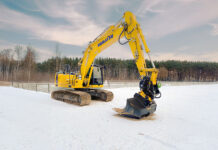LIEBHERR luffing jib cranes have been working on the final phase of the iconic Sagrada Família construction project in Barcelona.
The 710 HC-L and 125 HC-L cranes have been tasked with helping to complete architect Antonio Gaudí’s masterpiece, which began construction in 1882. Liebherr explained that the models’ collapsibility and adaptability to site requirements were decisive factors in the decision to select this equipment.
“The construction department of the Sagrada Família chose these cranes for two main reasons: firstly, their folding design minimises the impact on surrounding buildings, and secondly, their adaptability to the area’s specific requirements,” said Fernando Villa, director of construction and technology at the Sagrada Família.
Roberto Insausti, commercial director of the tower crane and mobile construction crane division at Liebherr Ibérica, added, “Liebherr is a global leader in the tower crane sector, and we are experts in special projects. Our engineering department, known as Tower Crane Solutions, comprises qualified professionals with many years of experience who plan the manoeuvres according to the specific needs of each project.”
The Liebherr 710 HC-L 32-64 Litronic luffing jib crane will be responsible for completing the Tower of Jesus Christ, which is set to reach 135m in height. The machine has a maximum lifting capacity of 64 tonnes. The Liebherr 125 HC-L crane, meanwhile, will be working on the Chapel of the Assumption and the adjacent cloisters.
Jochen Wille, project manager at Liebherr Tower Crane Solutions (TCS), revealed that one major challenge was to develop a solution for the 710 HC-L 32-64 Litronic, which could be erected at a height of approximately 54m and comply with the highest safety requirements. “The crane then had to be brought to its final height and anchored to the Tower of Jesus Christ at a height of approximately 130 metres,” he added.
A special bracing structure, measuring 20m-long, 10m-wide and weighing 27 tonnes, had to be designed and manufactured specifically for this phase.
The assembly of the 710 HC-L and 125 HC-L luffing jib cranes required extensive planning. The erection, especially the telescoping, could only proceed under specific wind speeds. Moreover, the Sagrada Família’s location in the heart of Barcelona limits the availability of spacious work areas for manoeuvres. The installation process also faced a constant influx of tourists to the globally renowned site. As a result, the assembly had to be completed swiftly, with minimal disruption to the construction work and daily flow of visitors.












